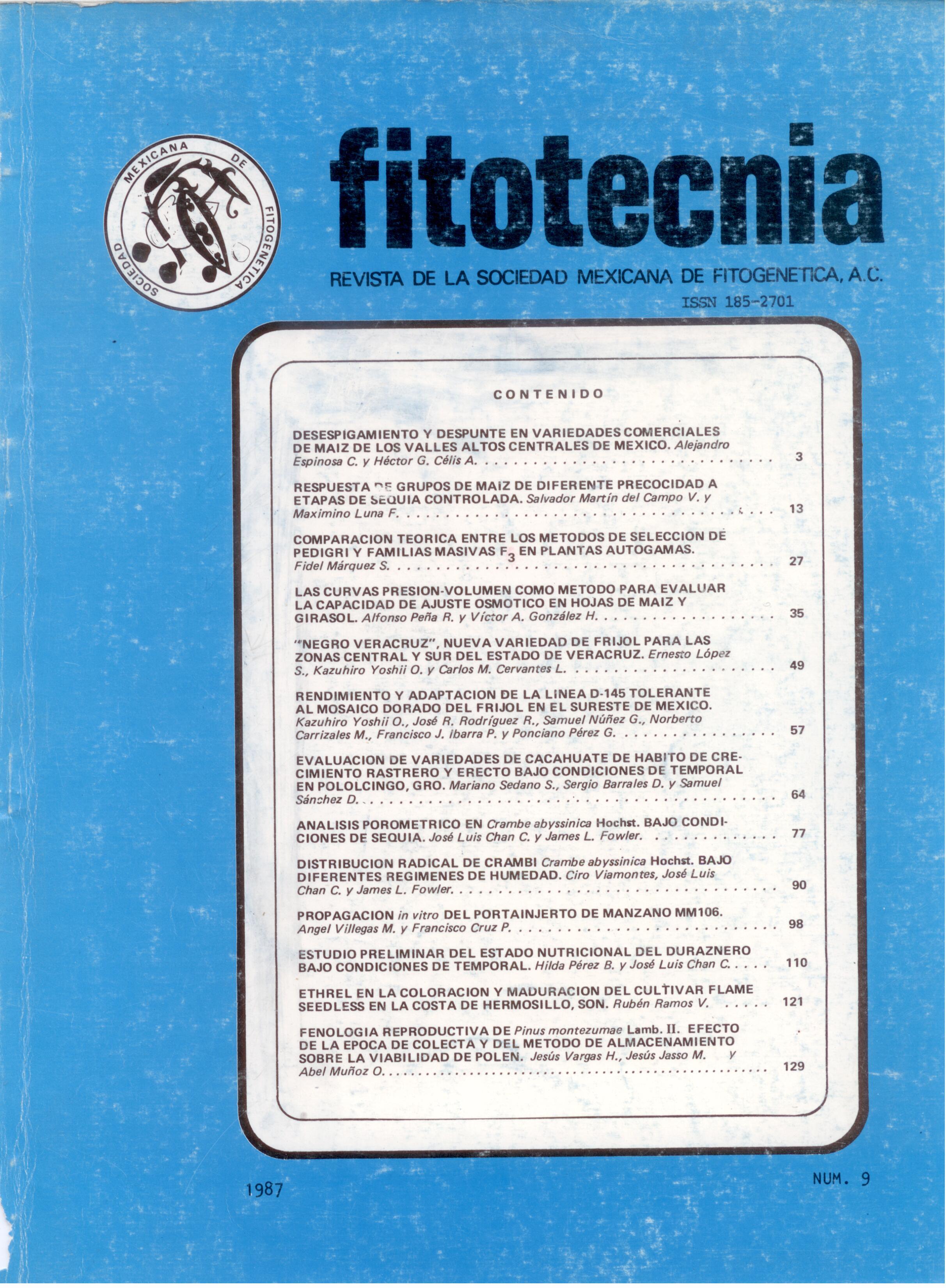PRESSURE-VOLUME CURVES AS A METHOD TO EVALUATE THE CAPACITY OF OSMOTIC ADJUSTMENT IN CORN AND SUNFLOWER LEAVES
Main Article Content
Abstract
Osmotic adjustment is an important drought tolerance mechanism in plants, the detection of which requires knowing the osmotic and turgor potentials at various degrees of dehydration of the plant organ of interest. Given that the pressure-volume curve technique allows determining both the osmotic potential and the turgor potential, the objective of the present study was to evaluate the capacity of said technique to detect osmotic adjustment in immature leaves of corn and sunflower plants subjected to a deficiency. progressive edaphic humidity, through the use of a pressure chamber. In both species it was observed that as the water deficit accentuated, the osmotic potentials at the same relative water contents gradually decreased, and that the loss of turgor was reached at increasingly lower water potentials; The above indicates that corn and sunflower presented osmotic adjustment, this phenomenon being of greater magnitude in sunflower. It was concluded that the pressure-volume curve technique is effective for detecting osmotic adjustment in leaves, although only few samples can be measured at a time. Furthermore, the technique allowed us to estimate the fraction of water bound to the apoplast and the elastic modulus of the cell walls.

